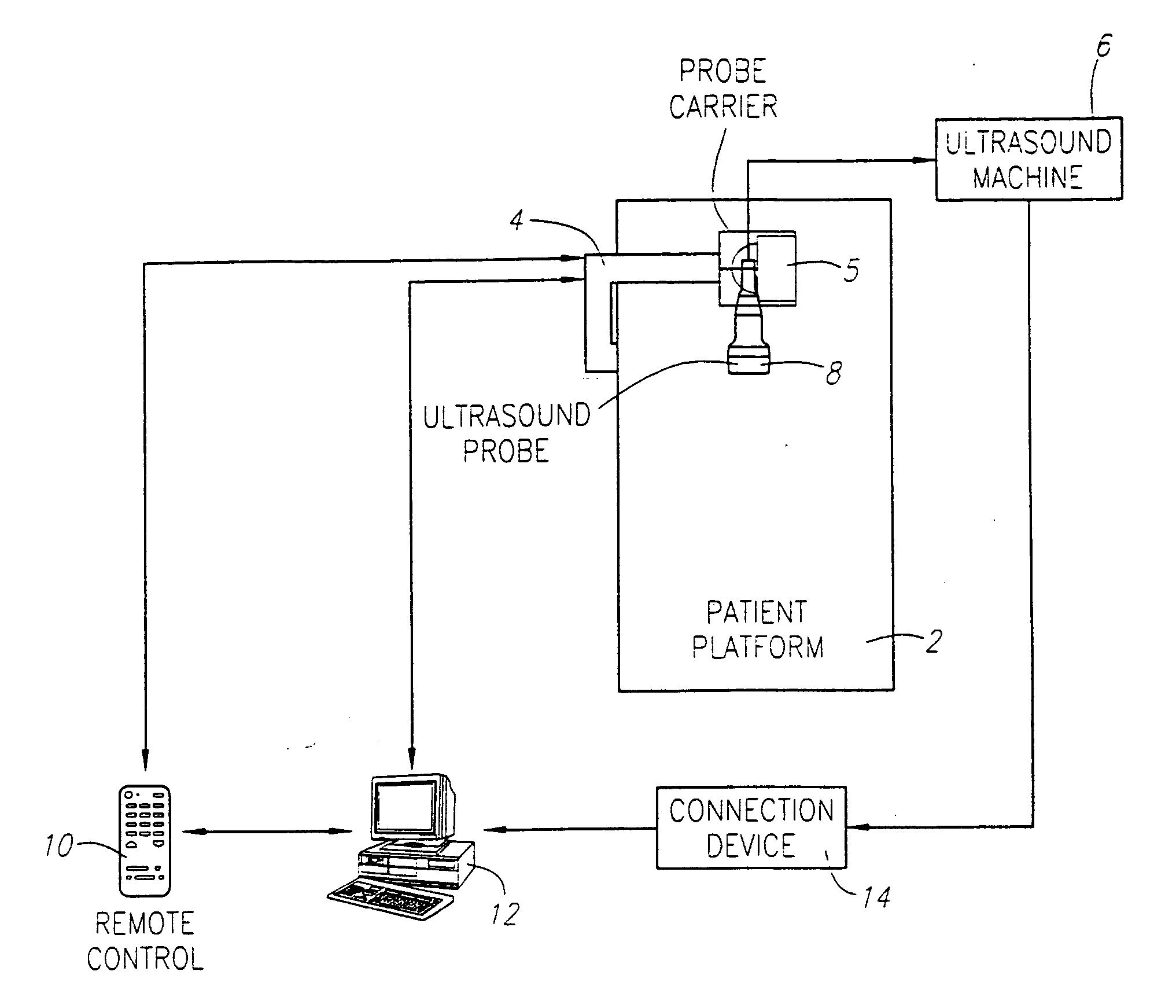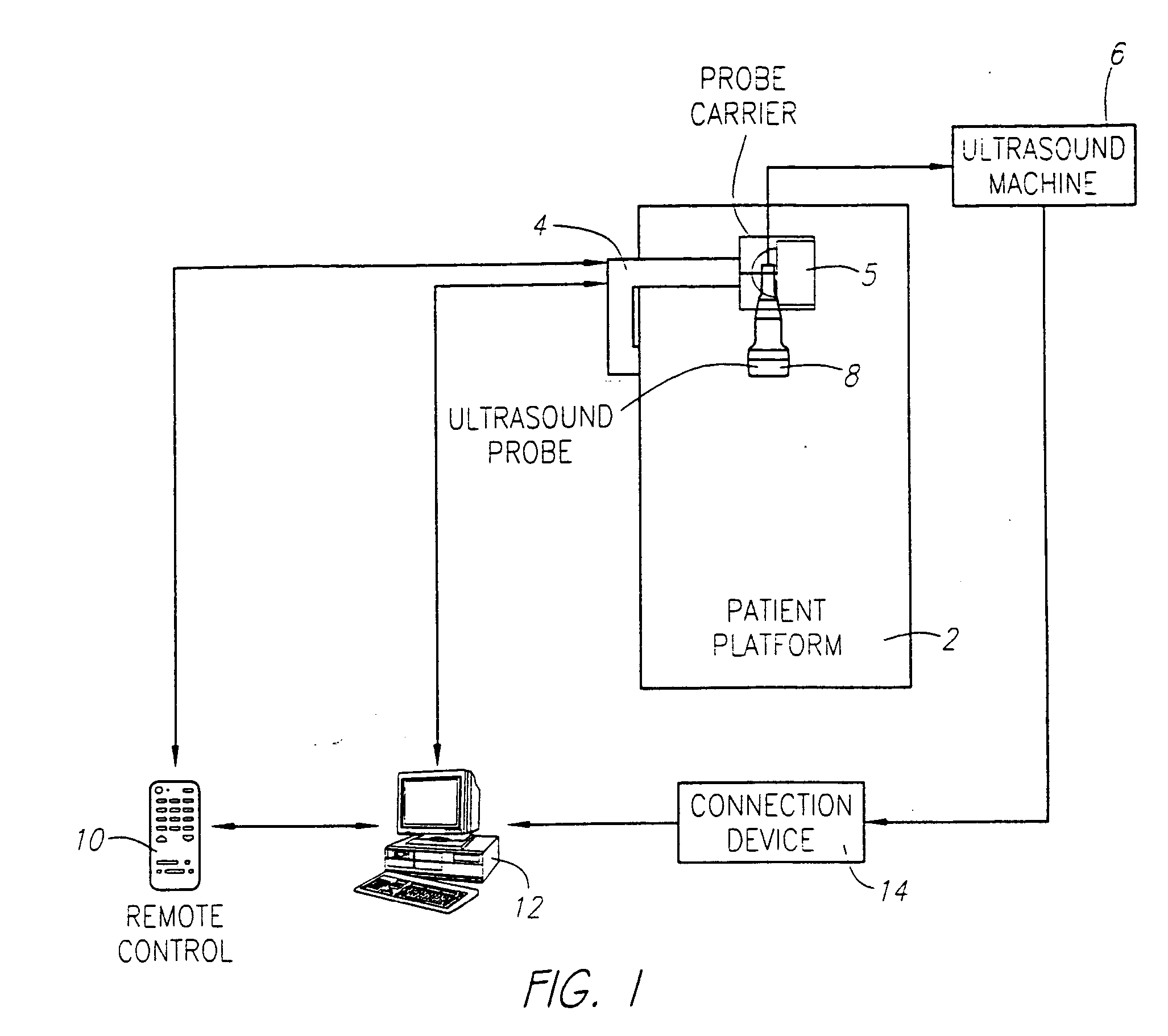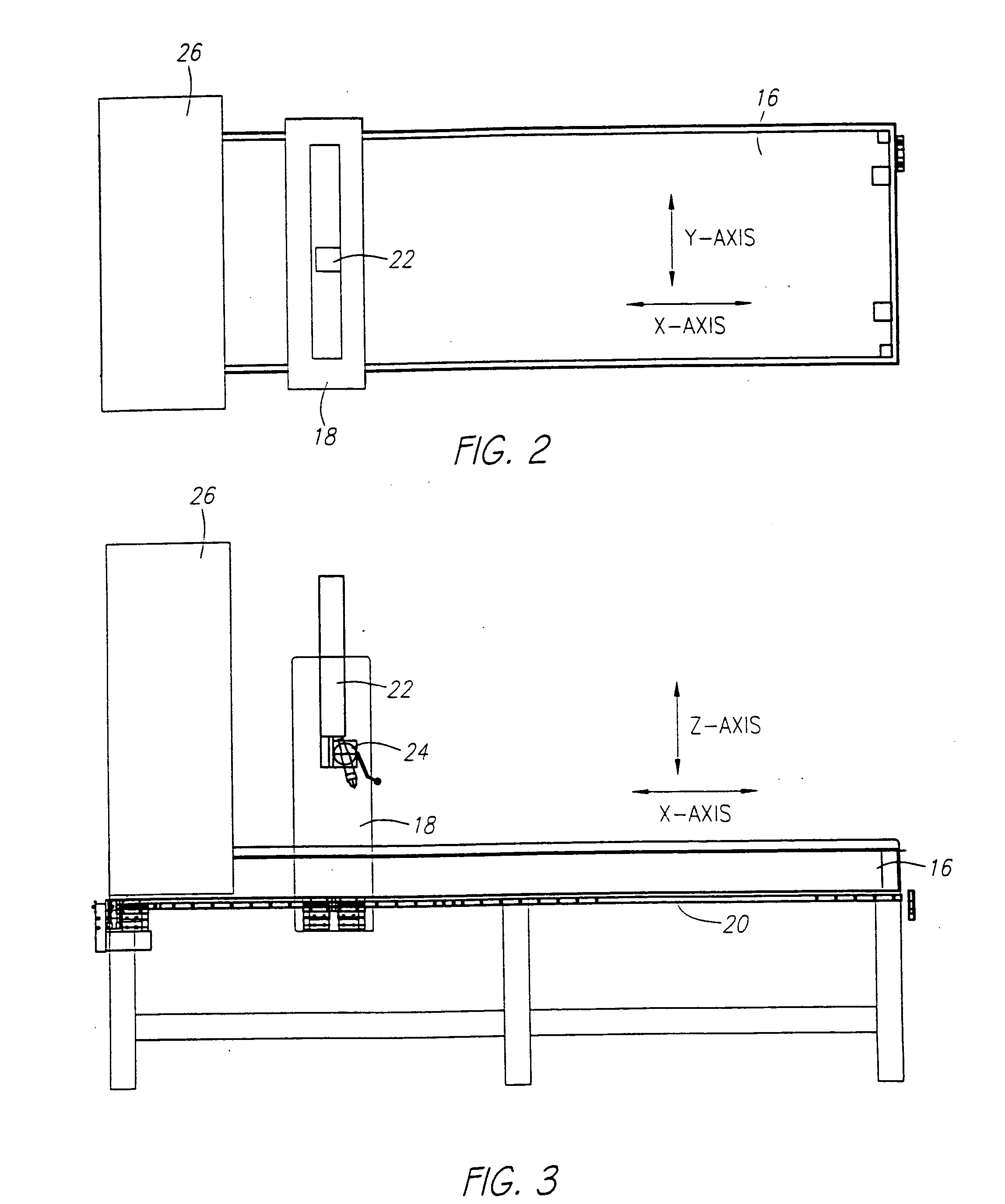Ultrasonic cellular tissue screening system
a cellular tissue and ultrasonic technology, applied in ultrasonic/sonic/infrasonic image/data processing, instruments, applications, etc., can solve the problems of misrepresentation of overall findings, process error, and haphazard coverage of scanned tissue, so as to achieve reliably screened and easy removal
- Summary
- Abstract
- Description
- Claims
- Application Information
AI Technical Summary
Benefits of technology
Problems solved by technology
Method used
Image
Examples
Embodiment Construction
[0031] As shown in FIG. 1, a preferred embodiment is comprised of a patient platform 2 to steady the patient and provide a base for the support member 4, the probe carrier 5 connected with the support member 4 that is capable of translational movement to guide the probe across the tissue to be scanned, a standard medical ultrasound device 6 with an associated probe 8, a remote control device 10 that operates the probe carrier 4, a standard computer 12, a connection device 14 between the ultrasound device 6 and the computer 12, and a viewing program that obtains images from the ultrasound device and converts them into images compatible with the viewing program and displays the images. The medical ultrasound scanning device 6 with associated probe 8, computer 12, and connection device 14 are commercially available.
[0032] The mechanical carrier 4 holding the ultrasound probe 8 can be connected with the ultrasound scanner 6. Synchronization between the probe holder mechanical carrier 4...
PUM
 Login to View More
Login to View More Abstract
Description
Claims
Application Information
 Login to View More
Login to View More - R&D
- Intellectual Property
- Life Sciences
- Materials
- Tech Scout
- Unparalleled Data Quality
- Higher Quality Content
- 60% Fewer Hallucinations
Browse by: Latest US Patents, China's latest patents, Technical Efficacy Thesaurus, Application Domain, Technology Topic, Popular Technical Reports.
© 2025 PatSnap. All rights reserved.Legal|Privacy policy|Modern Slavery Act Transparency Statement|Sitemap|About US| Contact US: help@patsnap.com



